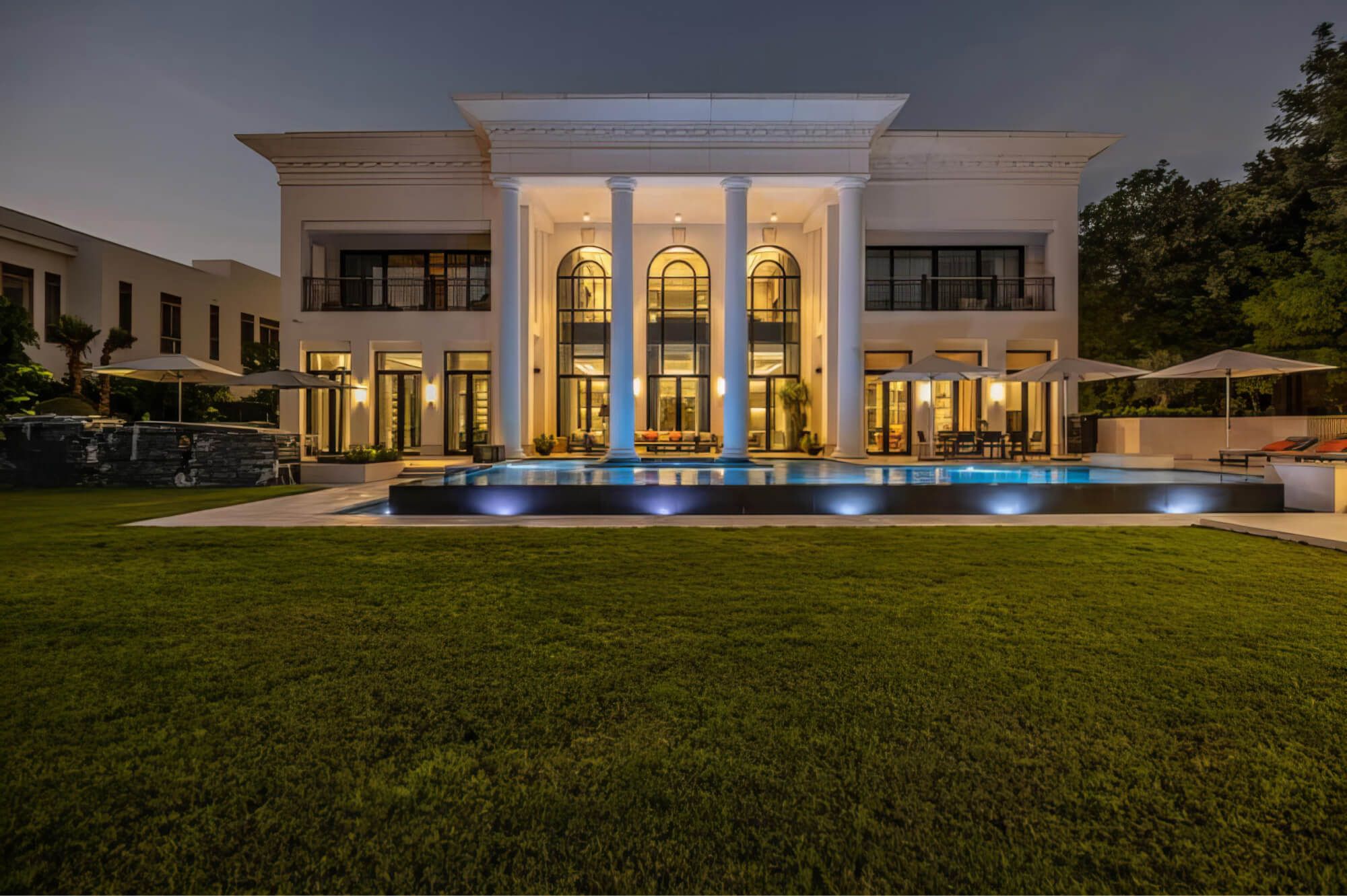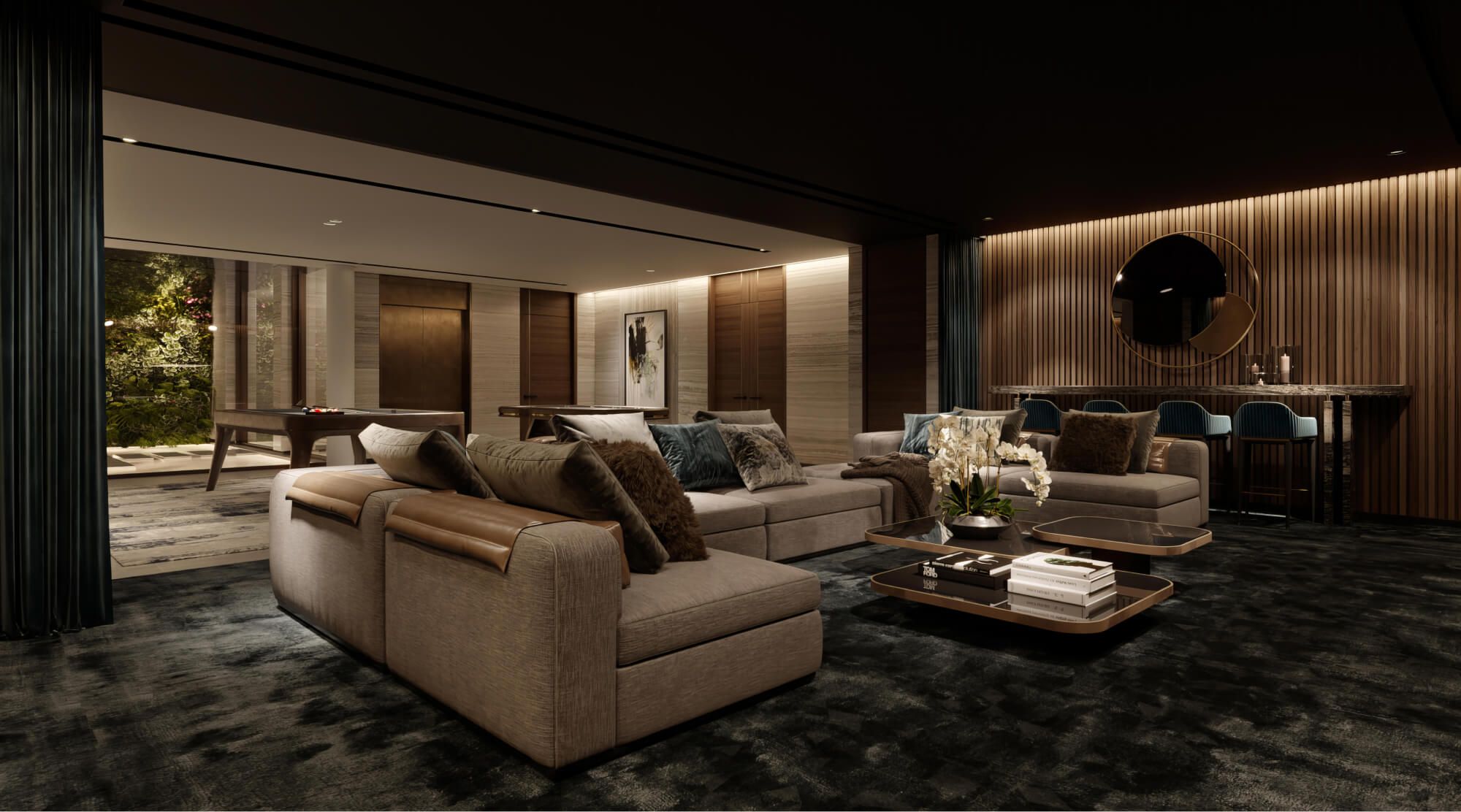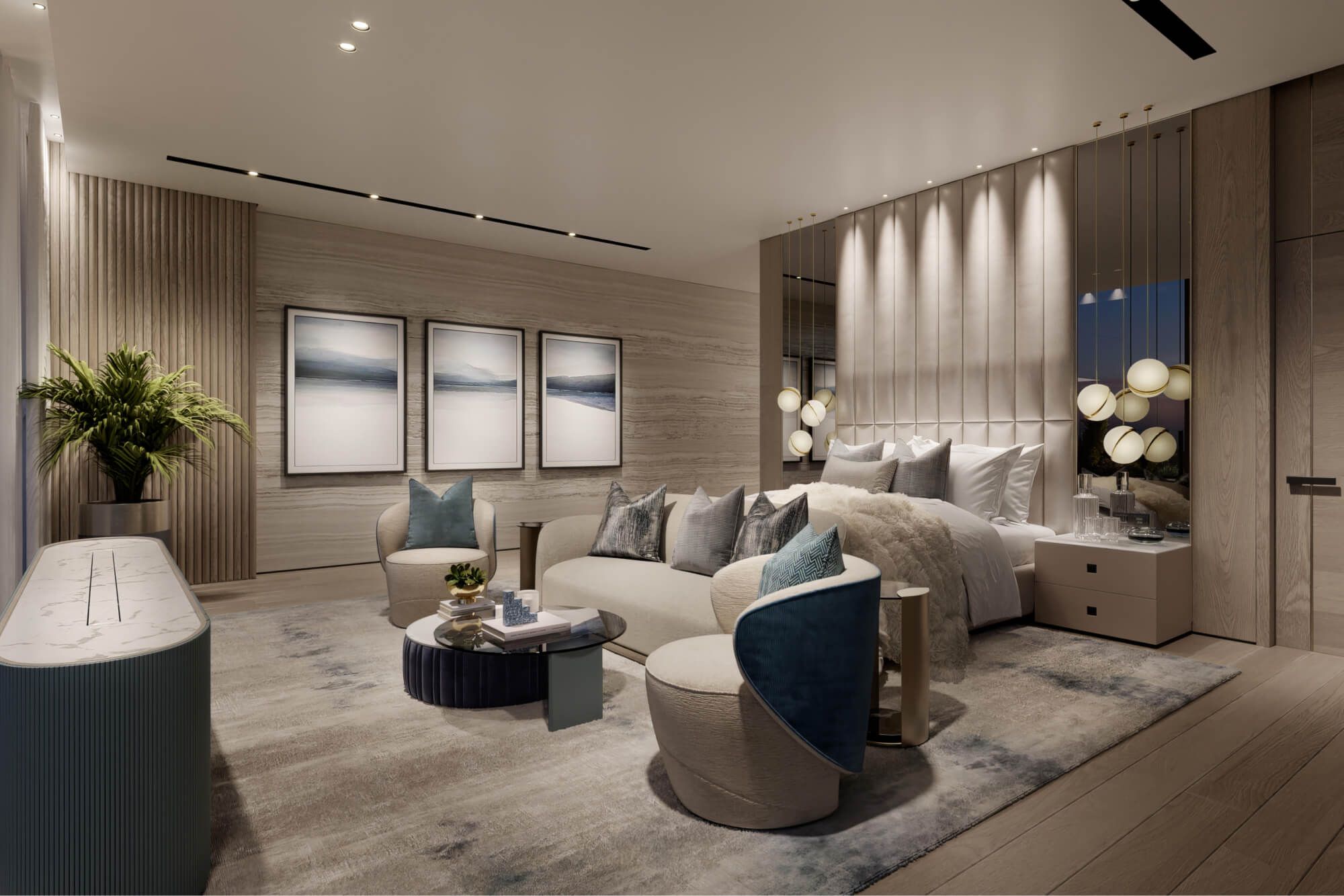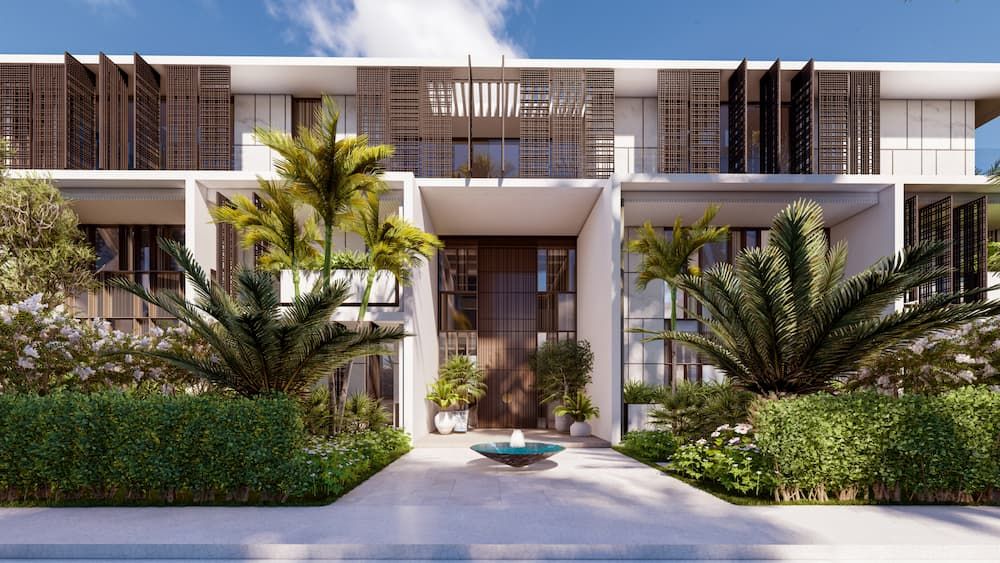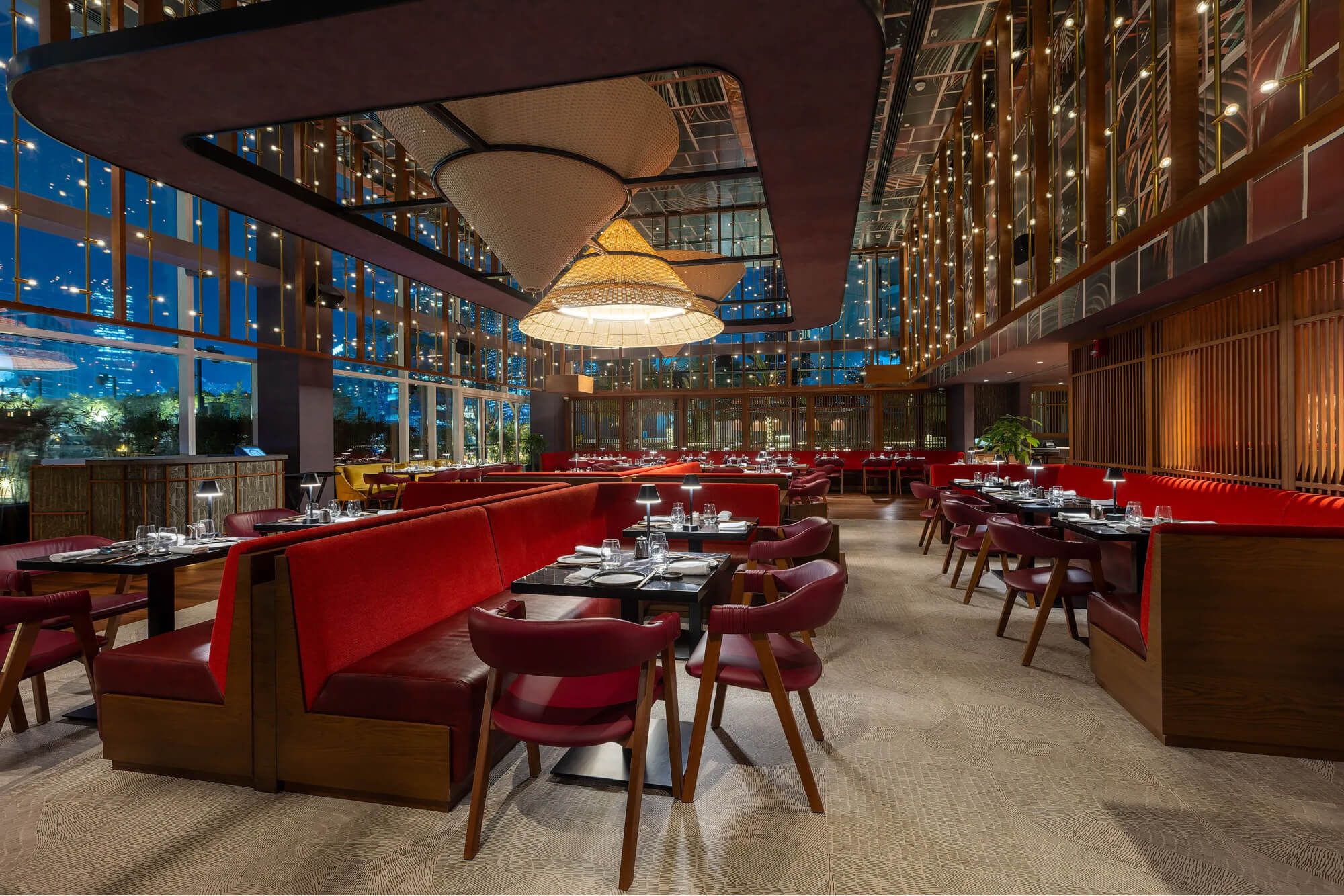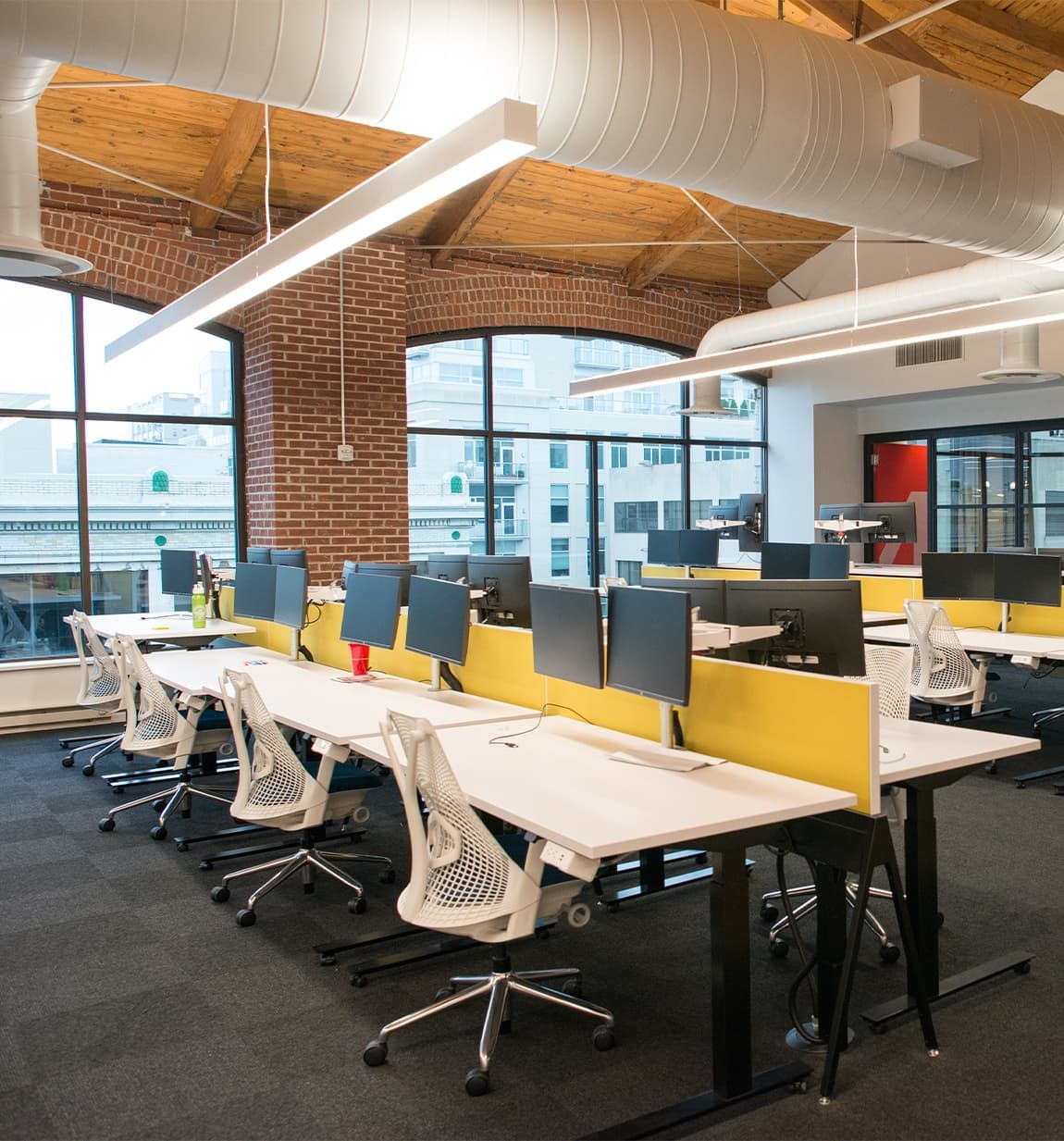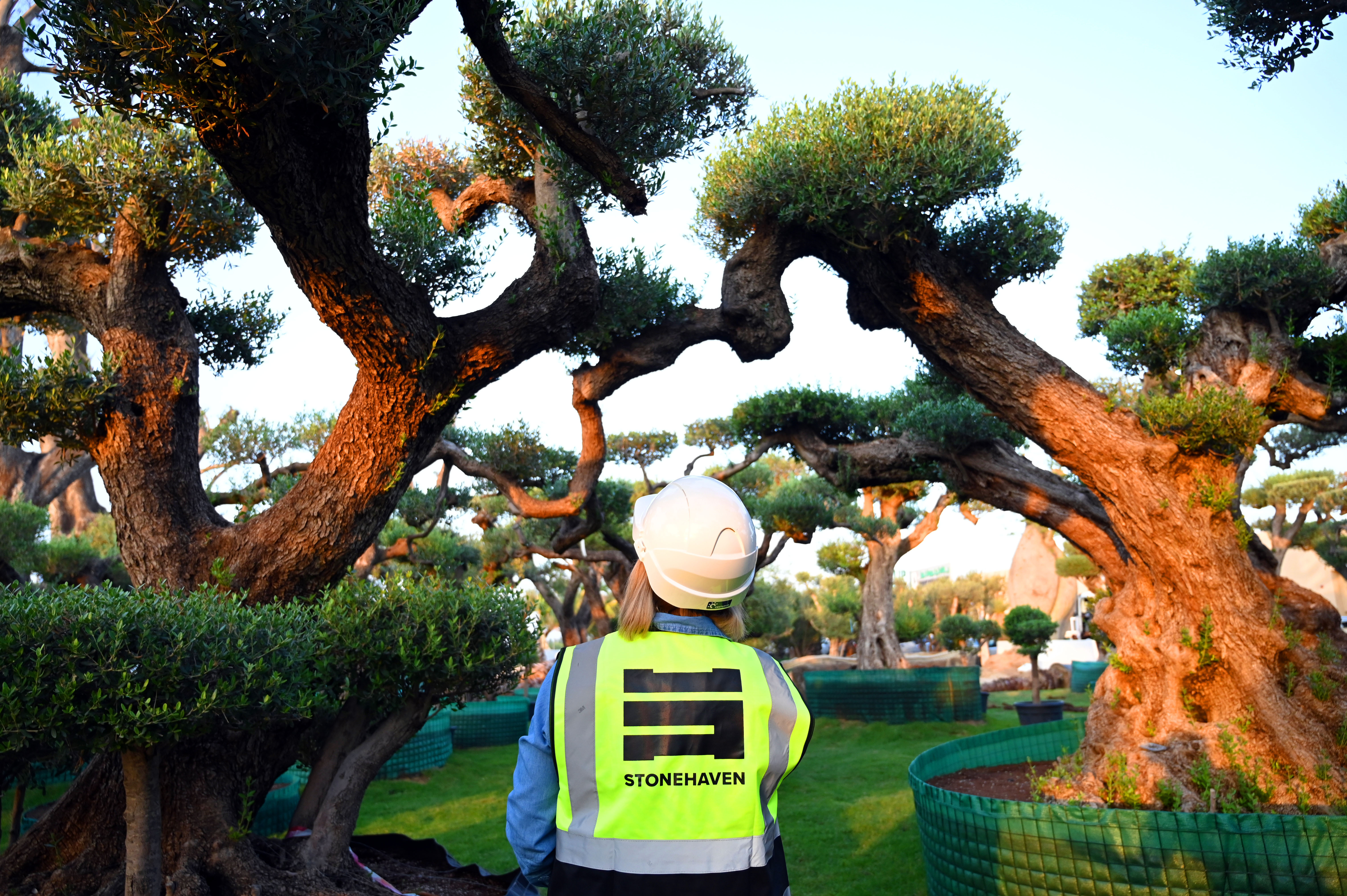“Although the construction industry has a long way to go in reducing its impact on the planet, accounting for 37% of global emissions, this report shows positive signs that the region is moving in the right direction.”
1. Executive Summary
This report delves into the advancements and challenges of sustainable construction globally, with a particular focus on the United Arab Emirates and Saudi Arabia. It examines LEED-certified projects in both countries and highlights their efforts in promoting green building practices.

The report also addresses global emissions from the construction and manufacturing industry, identifying India, Russia, and Vietnam as significant polluters. It provides details about the countries making the most effort to reduce emissions, which are Japan, Kazakhstan, and the USA.

It discusses notable green buildings worldwide and identifies the top three countries for LEED-certified projects, which are the USA, China, and Canada. The report concludes with insights on sustainable materials and the future of sustainability within the construction industry, emphasising the ongoing need for innovation and commitment to eco-friendly practices.
During 2019’s 10th annual World Green Building Week, the World Green Building Council released their vision for building and modifying infrastructures around the world with 40% less embodied carbon emissions by 2030. This vision also outlines a guide for having 100% net zero emissions buildings by 2050.

Presently, the building and construction industry still has a long road ahead to reach these goals. However, the sector is constantly looking for ways to achieve this vision, one of which is focusing on sustainable construction.
Stonehaven, a leading project management consultancy firm, explains that sustainable construction pertains to designing, building, and operating buildings and infrastructures in a sustainable, environmentally responsible way.
This concept focuses on minimising the depletion of natural resources, reducing greenhouse gas and carbon dioxide emissions, and promoting the wellness of the building occupants and the surrounding community.
“At Stonehaven, we are committed to reducing our environmental impact. By investing in the latest technologies, we have increased design and engineering efficiencies, resulting in less material wastage and energy consumption on our sites.”
2. What Is the Construction Industry Doing to Be More Sustainable?
Sustainable Project Planning and Design
This concept prioritises integrating eco-friendly practices from the project's inception. It includes designing structures for longevity, reducing resource consumption, and incorporating renewable energy sources. Sustainable project planning and design emphasises life cycle assessments, ensures the project's environmental footprint is minimised from construction to operation, therefore aligning with broader sustainability goals.
Material Sourcing and Management
Material sourcing focuses on procuring eco-friendly, recycled, and locally available materials to minimise environmental impact. It also involves verifying the supplier’s sustainability practices and opting for materials with certifications, such as Forest Stewardship Council (FSC) or Cradle to Cradle.
Effective management practices include tracking material usage, minimising waste, and choosing products with lower environmental footprints.
Energy Efficiency and Renewable Energy Use
This principle involves designing buildings with improved insulation, energy-efficient HVAC systems, and advanced energy management systems. It often includes integrating solar panels, wind turbines, and geothermal systems.
The goal is to lower dependence on fossil fuels and greenhouse gas emissions and develop net-zero energy buildings that produce enough energy to reduce their environmental impact.
Waste Reduction and Management
This concept focuses on reducing the waste generated during building processes through efficient planning and resource utilisation. It includes recycling construction debris, reusing materials, and employing construction techniques that decrease excess supplies.
Effective waste management strategies involve separating wastes, using prefabricated components, and implementing on-site recycling programs. These practices help prevent rubbish from going to landfills and reduce the carbon footprint of construction activities.
Water Conservation and Management
This involves implementing strategies to reduce water usage and improve the building’s water efficiency. This includes installing low-flow faucets, efficient irrigation systems, and rainwater harvesting systems.
Water conservation and management aim to reduce the strain on local water resources, decrease utility costs, and promote the sustainable use of water throughout the building’s life cycle.
Carbon Footprint Reduction
Carbon footprint reduction focuses on minimising greenhouse gas emissions through various eco-friendly practices by using low-carbon materials and renewable energy resources and improving the energy efficiency of buildings.
It also involves optimising building designs for natural lighting and ventilation, reducing transportation emissions through local sourcing, and employing carbon offset programs. The ultimate goal is to achieve carbon-neutral or even carbon-negative buildings, significantly mitigating the construction sector’s impact on climate change.
Employee Training and Stakeholder Engagement
Employee training ensures everyone involved in the project understands and can apply sustainable techniques and technologies. Stakeholder engagement encompasses communicating the benefits and goals of sustainability to clients, investors, and the community to gain support and encourage collaboration.
This holistic approach promotes a culture of sustainability, ensuring that projects meet environmental goals and gain broad-based acceptance and commitment.
Sustainability Certifications
Sustainability certifications like LEED (Leadership in Energy and Environmental Design) and BREEAM (Building Research Establishment Environmental Assessment Method) provide frameworks for assessing and recognising the environmental performance of buildings.
LEED is a green building rating system that provides a framework for constructing healthy, efficient, and eco-friendly buildings and its certification is recognised worldwide.
LEED-certified structures are designed and constructed using sustainable methods and materials. Because of this, the globally recognised LEED certification is a symbol of sustainability and environmental responsibility.
LEED certification is categorised into four levels: Certified, Silver, Gold, and Platinum, the highest rating. Points are awarded across different categories, including energy efficiency, water usage, and materials selection.
Both LEED and BREEAM certifications cover various aspects of sustainability, including energy efficiency, water use, material selection, and indoor environmental quality. Being recognised by these organisations demonstrates a building’s commitment to sustainable practices, enhancing its marketability and often results in operational cost savings and higher asset value.
Innovation and Continuous Improvement
This involves adopting cutting-edge technologies and practices to enhance sustainability. It includes using advanced materials, smart building systems, and novel construction techniques such as 3D printing.
Continuous improvement emphasises regularly updating practices based on the latest research and feedback, fostering a culture of sustainability and resilience. This dynamic approach ensures that sustainable construction practices evolve, stay effective, and lead to increasingly sustainable built environments.
3. Sustainable Construction in the UAE
From 2010 to 2020, the United Arab Emirates recorded a 10-year change of +11,730,000 tonnes (18.57%) in CO2 emissions. During the same period, the country logged a 10-year change of +11,790,000 tonnes (18.65%) of greenhouse gas (GHG) emissions.

Although these figures are promising, they show that the UAE still has a long way to go to reduce its CO2 and GHG emissions, especially when compared to other countries, such as Japan, Kazakhstan, and the United States.
The UAE has already taken several steps to achieve this goal. First, the Emirates Green Building Council (Emirates GBC) was established to spearhead the government’s aim of promoting environmental conservation. International green building certifications are also issued to raise the sustainability standards for new projects.
Additionally, the UAE’s Ministry of Climate Change and Environment set a target to cut carbon emissions to 31% by 2030 for the entire country. It has set an annual emissions target of 240 million tonnes of carbon dioxide equivalent (CO2-e) by 2030.

The building sector aims to be more sustainable by aiming to reduce emissions to 1 MTCO2e by 2050.
Many construction companies have already implemented the following practices to support this initiative:

These sustainable construction practices help reduce the construction industry’s environmental impact.
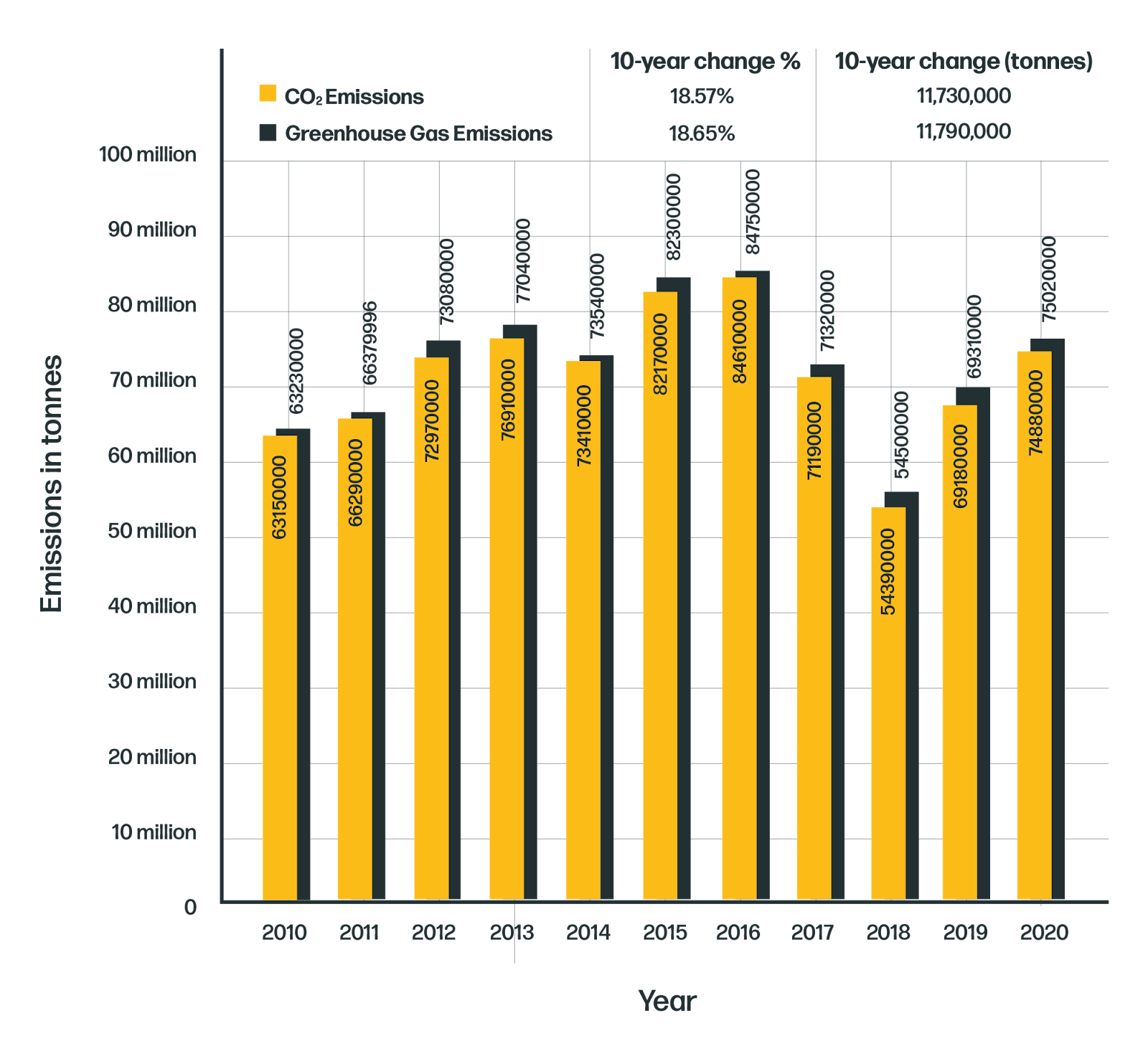
3.1. LEED Projects in the UAE
In the UAE, Dubai leads the country in the number of LEED-certified structures with 348 LEED-certified projects.
- ICD Brookfield Place
Dubai’s ICD Brookfield Place achieved the prestigious LEED Platinum certification in 2020. The US Green Building Council awarded it the highest rating for its green building design, construction, operations, and performance, highlighting its commitment to sustainability and environmental responsibility.
- Climate Change Initiative Building
This building received LEED Platinum certification, making it one of the highest-rated sustainable buildings in Dubai. According to the LEED Commercial Interiors category of building classification, it obtained an impressive 107 points to earn the distinction,
- University of Dubai (UD)
Located in the Dubai International Academic City, the UD campus is noted for being the first net-zero energy building in the region, which aligns with LEED Platinum certification. This distinction emphasises UD’s exceptional sustainability standards.
- Pacific Controls Headquarters Building
The five-storey building in Dubai Techno Park was LEED-certified in 2006. It currently holds a Platinum certification level.
- One JLT
This commercial building in the Jumeirah Lake Towers area was awarded the Gold LEED certification in 2015.
- Uptown Dubai
This mixed commercial and residential building is LEED-gold certified.
- ABN Amro Bank (Dubai Outsource Zone branch)
Located in the Dubai Outsource Zone, an area known for several LEED-certified properties, the branch of ABN Amro Bank here was awarded the LEED Gold rating in 2012.
- Dubai Chamber of Commerce & Industry Head Office
The building, which is found on Baniyas Road, Deira, was last certified in 2021. It currently holds a LEED Platinum certification.
The high number of LEED projects in Dubai is attributed to the establishment of Al Sa'fat, an additional green building rating system that streamlines the process for sustainable construction projects. Under this regulatory framework, all buildings should at least be classified as 'Silver Sa’fa’, which is mandatory for all new projects.
This classification ensures the structure adheres to green building standards, provides value, and enables the occupants or users to be healthy, safe, and efficient.
Moreover, the Dubai Municipality is pushing hard to make existing buildings more eco-friendly by implementing additional retrofitting and energy efficiency requirements. These structures are covered by the Sa'fat system when undergoing reconstruction.
Dubai Municipality is also studying strategies to ensure the construction sector uses more recycled materials in green building projects.
These efforts have established the city of Dubai as one of the leaders in the LEED movement in the MENA region and world.
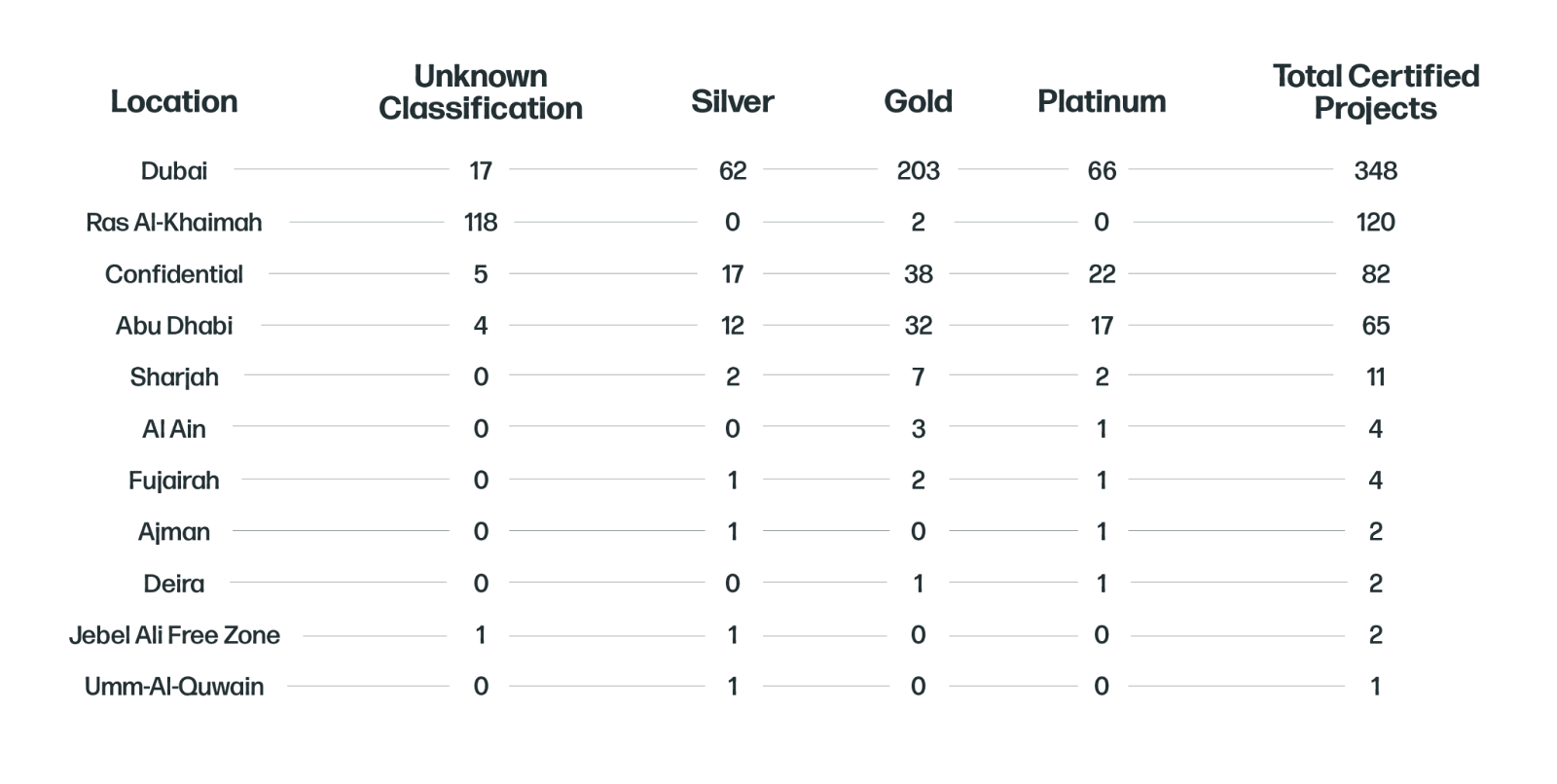
“Our dedication to sustainability extends beyond our operations. We educate our clients on the benefits of sustainable construction methods, including solar solutions, water reduction systems, and eco-friendly materials. One of our recent projects, the Jetex Al Bateen VIP Airport Lounge in the UAE, has been awarded the Estidama 3 Pearl Rating.”
4. Sustainable Construction in Saudi Arabia
The Kingdom of Saudi Arabia (KSA) recorded a change of -26,800,000 tonnes (-24.18%) in CO2 emissions in 10 years, from 2010 to 2020. The country also saw a reduction in GHG emissions, with an average difference of -26,880,000 (-24.20%) tonnes during the same period.
Saudi Arabia currently ranks fifth in terms of reducing CO2 and greenhouse gas emissions in the world, behind Japan, Kazakhstan, the United States, and Venezuela.

The country’s significant decrease in CO2 and GHG emissions supports their aim to reach net zero greenhouse gas emissions by 2060. The government is constantly developing and implementing energy efficiency programs and investing in clean hydrogen, renewable energy sources, and carbon capture technology to achieve this goal.
The government also has additional green building codes and regulations and offers financial incentives for construction projects employing sustainable construction practices.
Local construction management firms are employing greener practices to support the government’s sustainability initiative as well. Examples of these are:
- Using recyclable, low-impact, and durable building materials in construction projects.
- Integrating features in project designs that minimise energy consumption, such as solar energy and efficient HVAC systems and insulation.
- Incorporating water conservation techniques and technologies in building designs and construction.
- Encouraging the reduction, recycling, and reuse of construction and demolition waste to lower the carbon footprint of building projects.
These initiatives ensure Saudi Arabia is on the right track to building a more sustainable future.
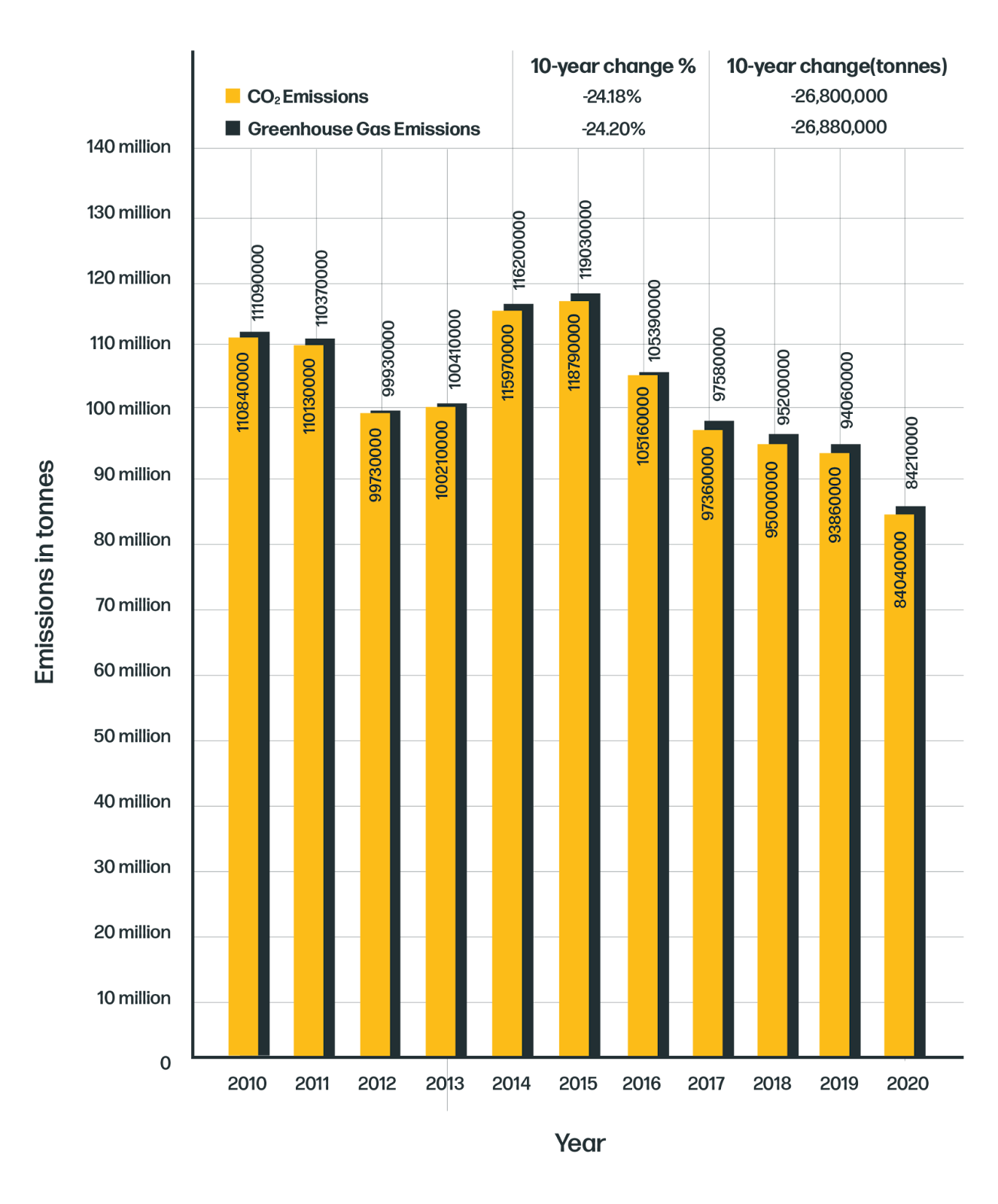
4.1 LEED Projects in Saudi Arabia

Capital city, Riyadh, had the most LEED-certified projects with 886.
KSA and UAE are the only Middle Eastern nations in the top 10 countries with the most LEED projects.
Some of the Saudi Arabia’s noteworthy LEED structures are:
- King Abdullah Financial District (KAFD)
The KAFD is the largest mixed-use financial centre in the region that has been awarded a LEED Platinum certification.
- Princess Noura Bint Abdulrahman University
The world’s largest university for women is LEED-certified, with four buildings awarded the LEED Gold certification.
- SABIC Jubail Building
Located in the Jubail Industrial City, the Sabic Jubail Building has a LEED Gold certification, thanks to its accomplishment of being a carbon-neutral building.
- King Abdullah Petroleum Studies and Research Centre (KAPSARC)
The technical, eco-friendly design of KAPSARC led to its recognition by the US Green Building Council, awarding the building a LEED Platinum certification.
- King Salman Energy Park
King Salman Energy Park is the first industrial city to receive a LEED Silver certification.
Aside from applying sustainable construction practices, the industry is helping the government achieve their environmental sustainability goals through the following:
- Integrating renewable energy technologies in building projects. These include installing solar panels and other green energy solutions in the structures.
- Opting for innovative and sustainable construction supplies. Examples are paper composite panels, cross-laminated timber and other eco-friendly concrete and bio-based building materials.
- Including Internet of Things (IoT) technology in building designs. IoT optimises energy usage, monitors air quality, and regulates lighting and temperature, making buildings more energy-efficient while providing occupants with a healthy environment.
All these will undoubtedly propel Saudi Arabia as it advances its sustainability efforts.
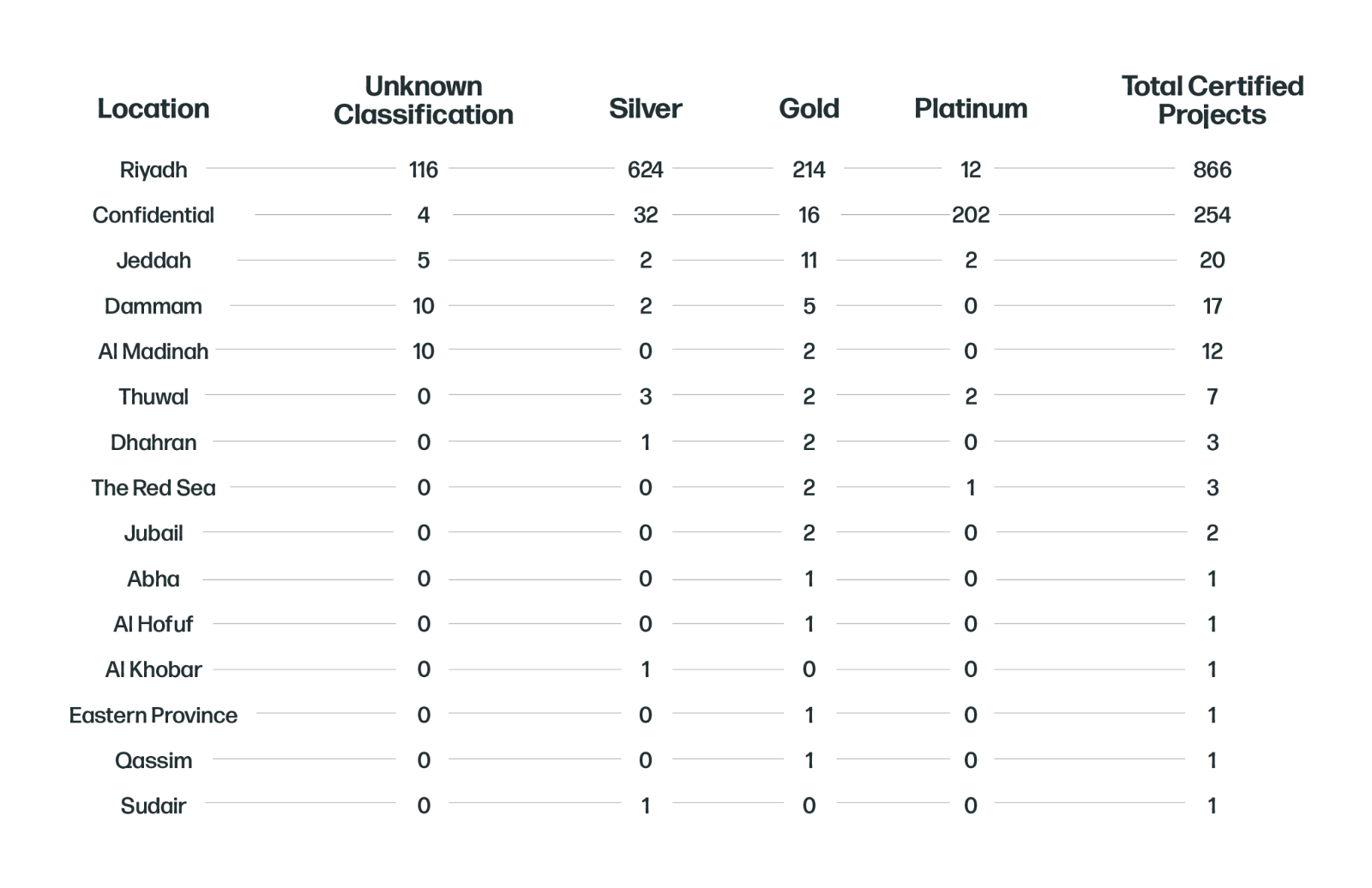
5. Global Emissions From the Construction and Manufacturing Sector
According to Our World in Data, the building and construction industry ranks third in greenhouse gas emissions.
The sector’s excessive greenhouse gas and carbon emissions stem from the following factors:
- Energy consumption. Buildings and spaces require electricity for heating and cooling and powering appliances, accounting for energy-related emissions.
- Transportation. Vehicles transporting supplies, equipment and workers and using diesel-powered machinery in construction sites contribute to carbon and greenhouse gas emissions.
- Cement production. Cement is a staple construction material. However, cement production is one of the biggest carbon emitting processes in construction.
- Construction materials production. Aside from cement, the production of steel, concrete, and other construction materials contribute to carbon pollution.
- Construction waste disposal. Disposing waste from site clearance, demolition, and other construction processes, emit carbon and greenhouse gases and toxic gases into the atmosphere. They may also find their way to soil and waterways and pollute them.
Residential and commercial buildings also contribute to carbon and greenhouse gas emissions due to the use of electricity for lighting, heating and cooling spaces, and making spaces more functional, comfortable and appealing.
5.1 Increasing Emissions in the Global Construction and Manufacturing Industries
Although many nations have made significant strides in reducing their CO2 and GHG emissions, some countries have recorded the opposite and, instead, increased their emissions.
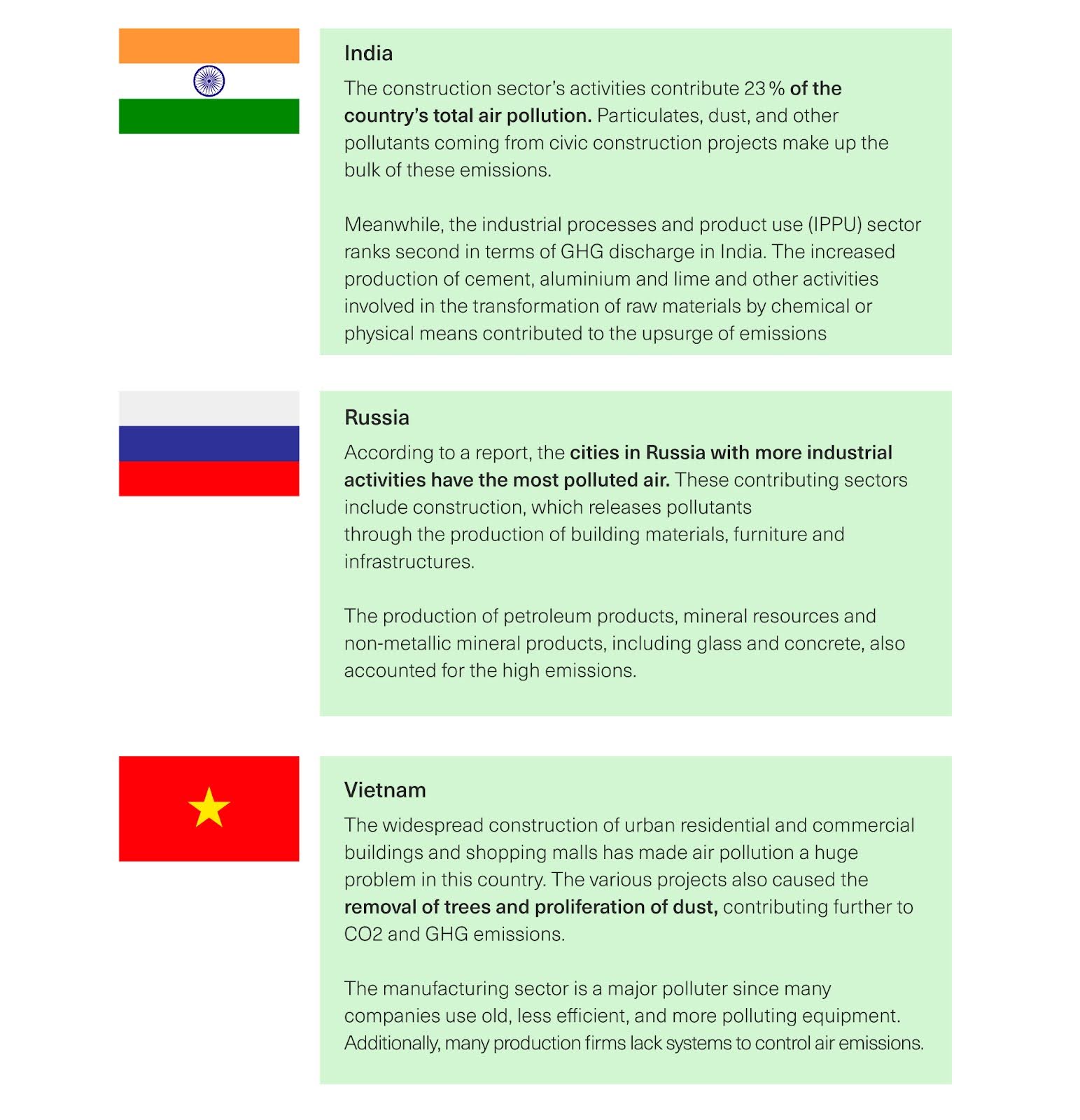
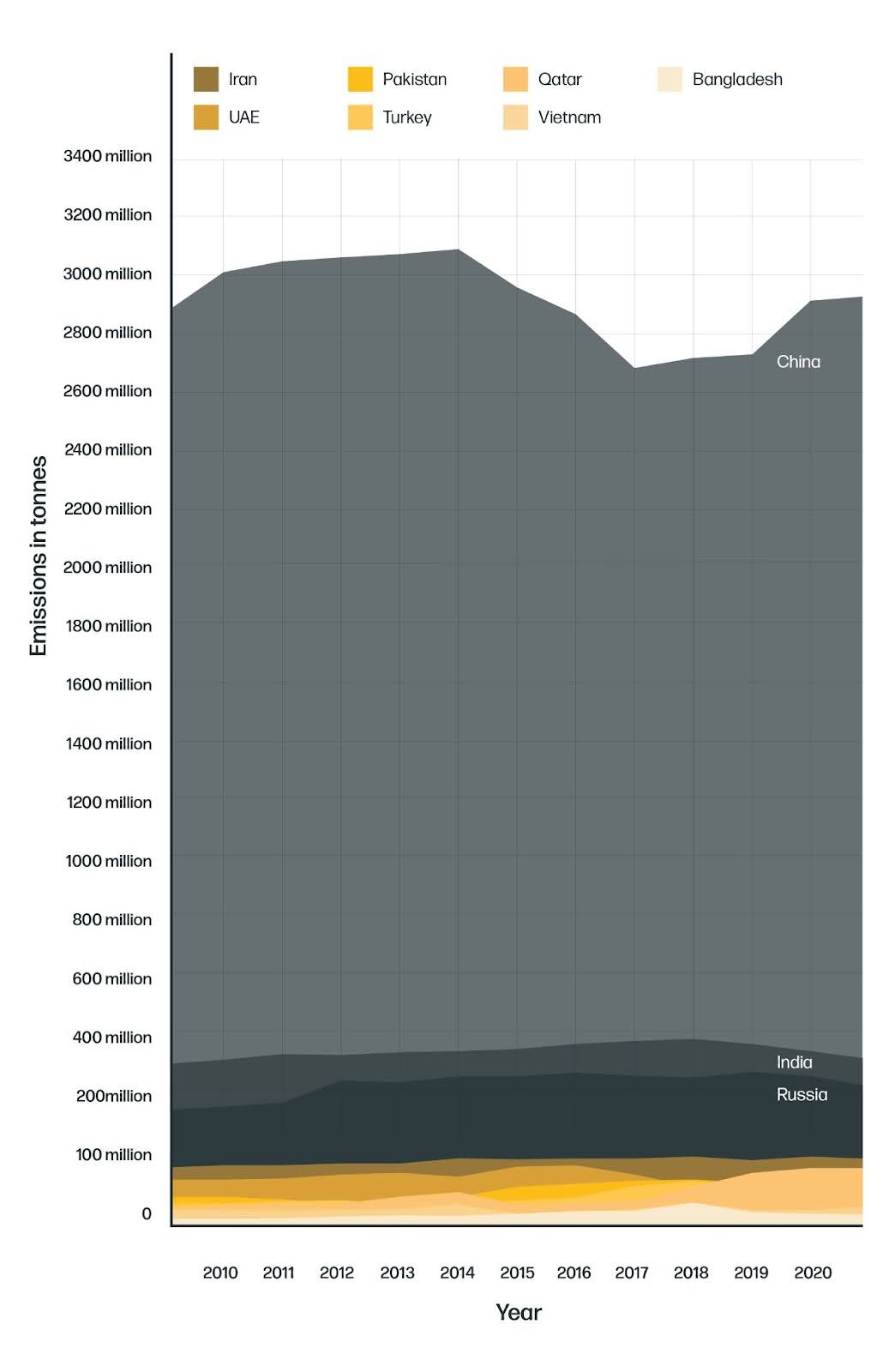
5.2 Reducing Emissions in the Construction and Manufacturing Industries
Many countries also saw a decrease in carbon and greenhouse gas emissions in the construction and manufacturing sectors over the past years. Leading the pack are the following:
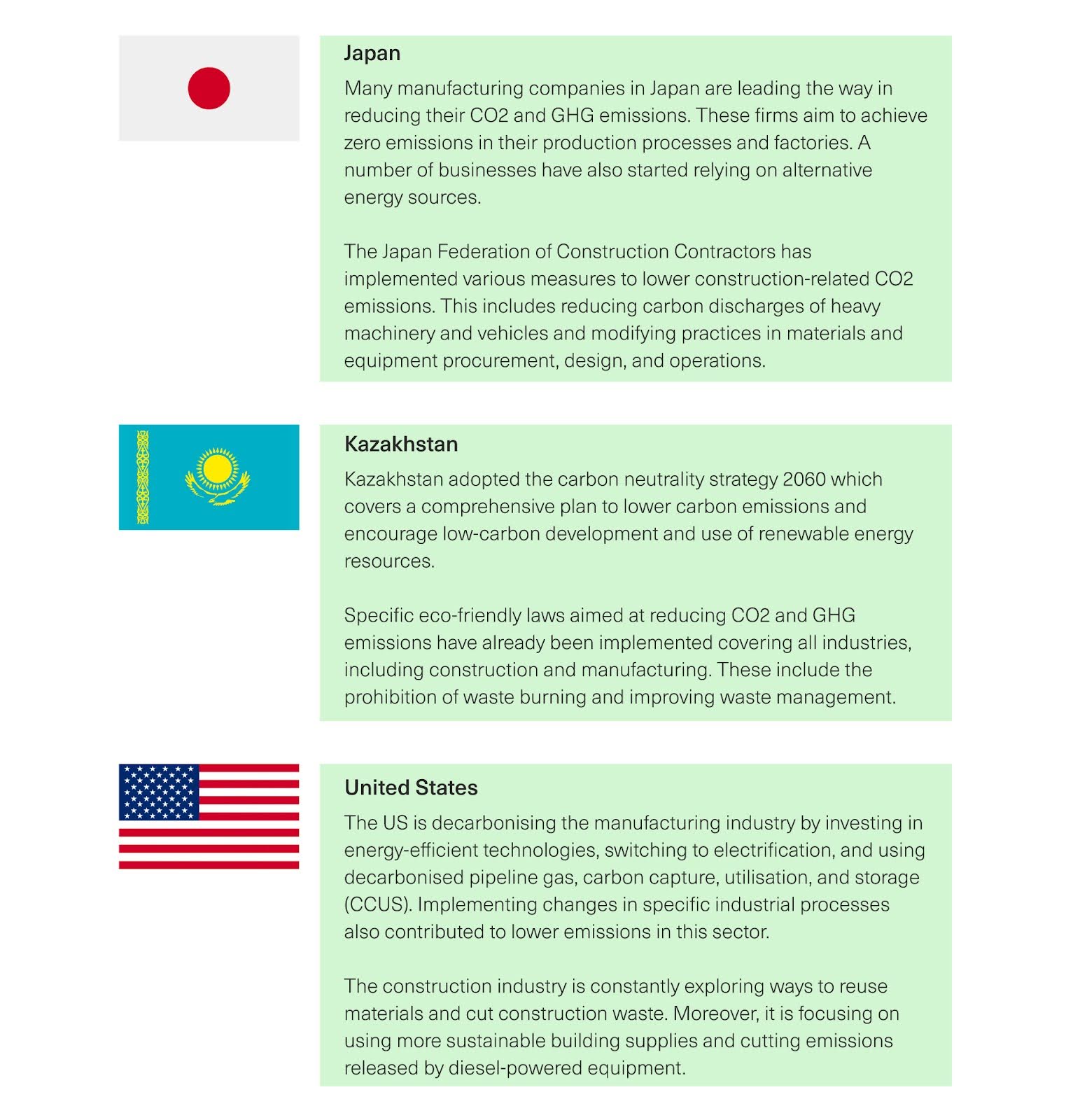
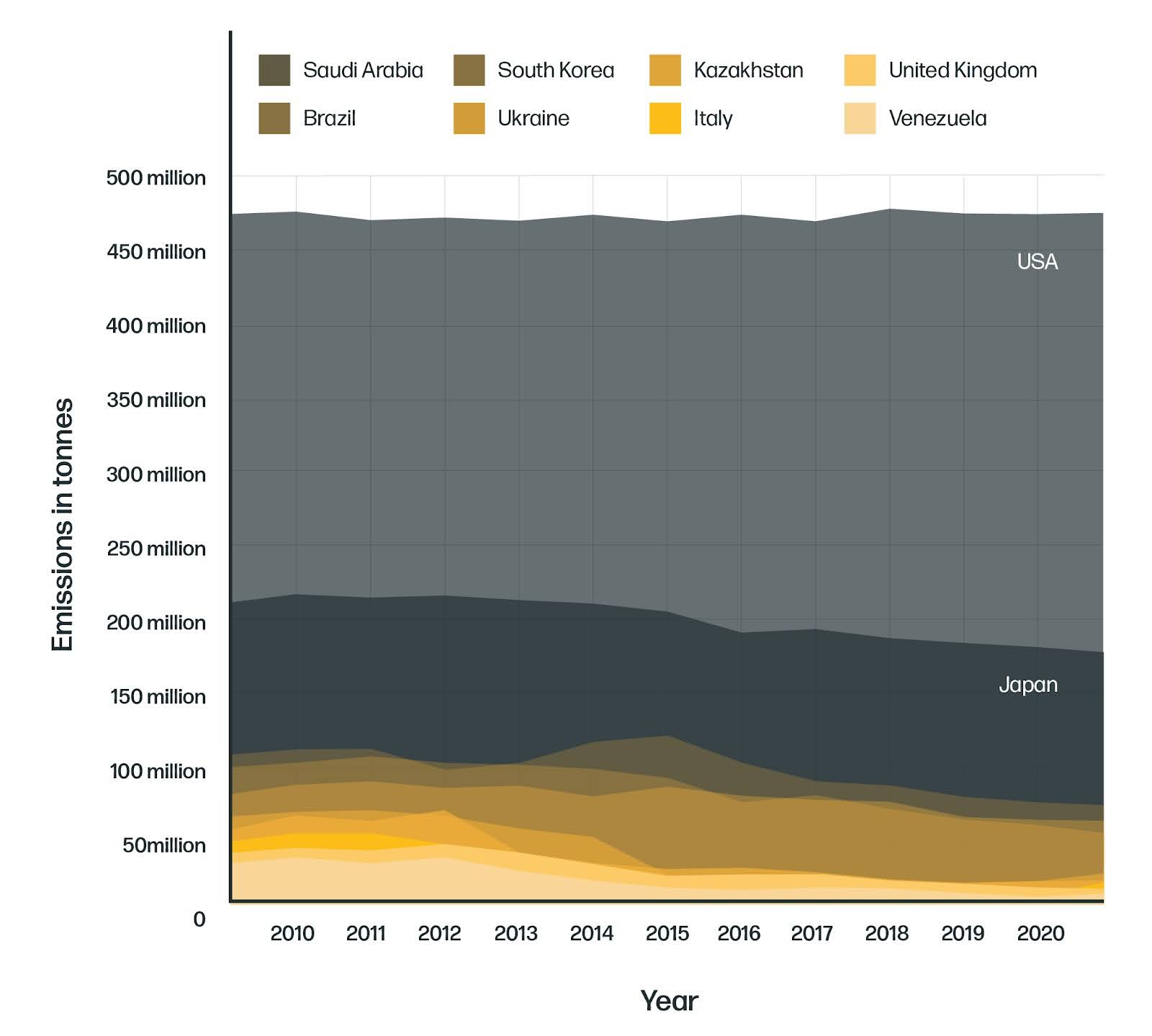
6. Green Buildings Around the World
LEED certified buildings offer the following benefits:
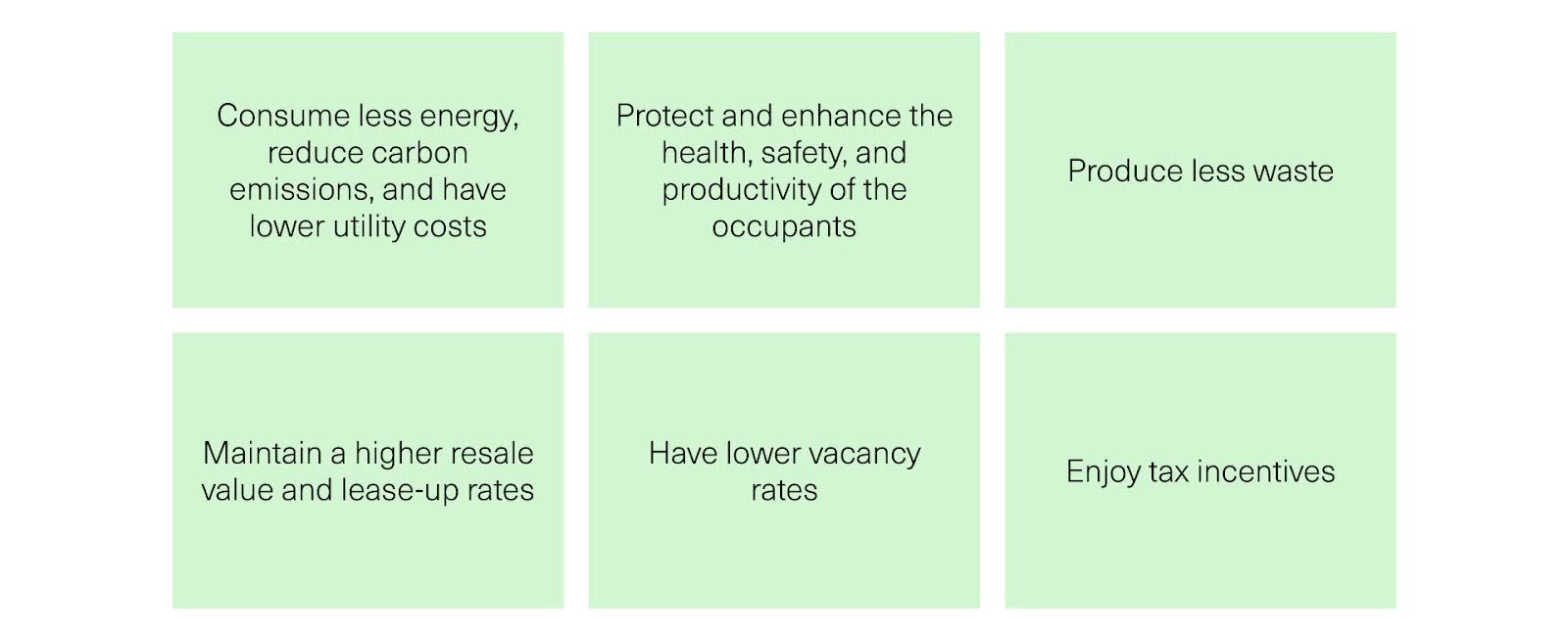
These benefits make obtaining a LEED certification a smart decision for companies and a pathway for making the construction industry more sustainable and environmentally friendly.
6.1. Countries With the Most LEED Projects
The top three countries with the most LEED-certified projects are:

United States
At present, the USA has 85,223 LEED-certified buildings. New York, Illinois, and Massachusetts lead the pack.
Some of the most popular LEED buildings here are the following:
- David Rockefeller Creative Arts Centre
- The Reed at Southbank
- MGM Music Hall at Fenway
- 434 Kirkland
- 3445 Peachtree
China
China currently has 6,667 LEED-certified buildings, with Shanghai having the most number of LEED-accredited projects.
The most popular are:
- AZIA Centre
- Beijing International Finance Centre
- Nike China’s Logistics Center
- Johnson Controls Asia-Pacific HQ
Canada
At present, Canada boasts 2,139 LEED-certified projects. Ontario, Quebec, and British Columbia are the top three cities with the most LEED-certified projects.
The country’s renowned LEED-certified buildings include:
- Manitoba Hydro Place
- The Fairmont Royal York Hotel
- VanDusen Botanical Garden Visitor Centre
- Eighth Avenue Place
- Gulf Islands National Parks Preserve Operations Centre
With thousands of LEED-certified projects, these countries demonstrate their dedication to green building practices and eco-friendly initiatives.
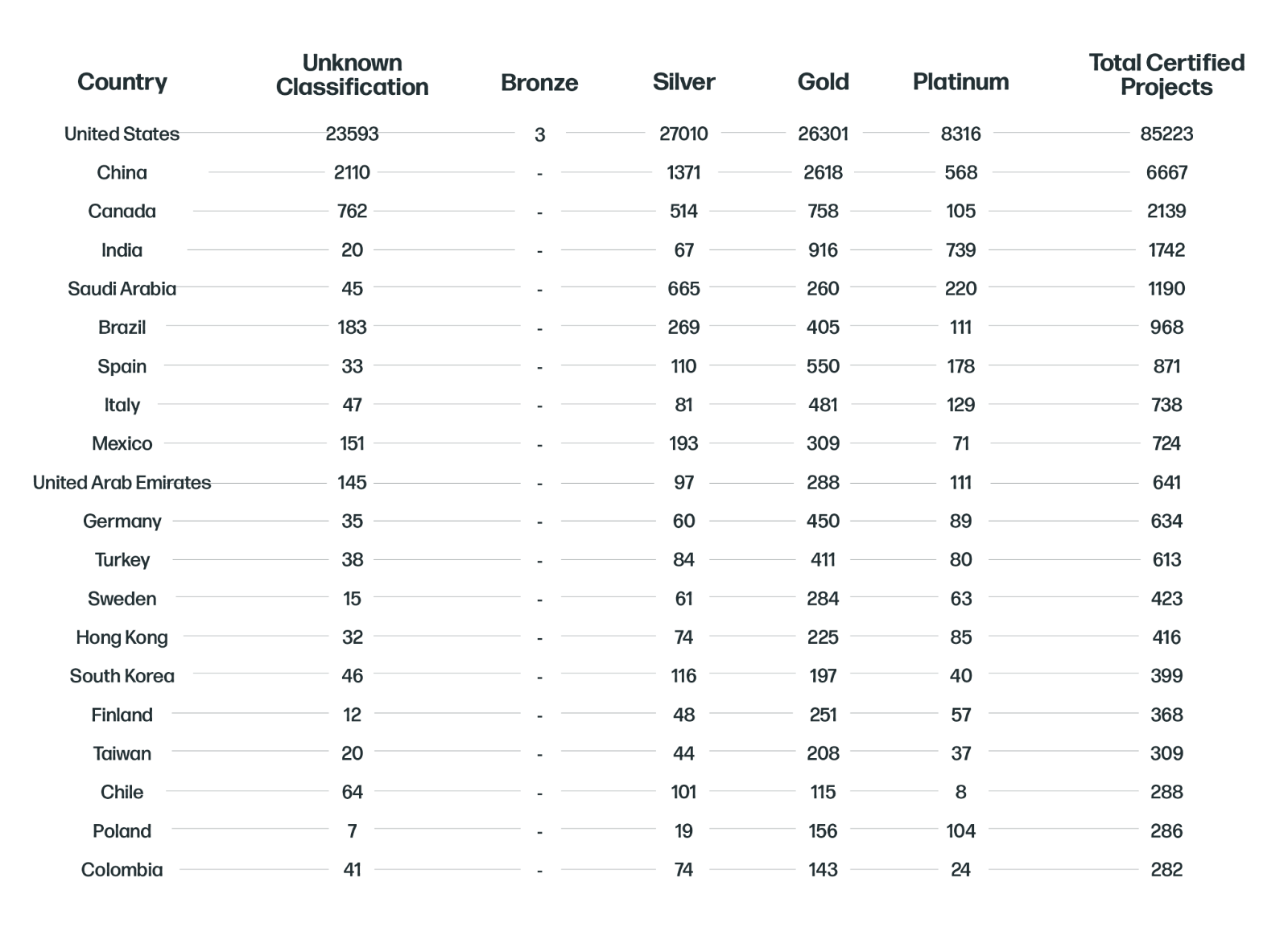
7. The Move to Sustainable Materials
Sustainable construction materials offer a pathway to reduce environmental impact significantly. Unlike traditional materials, these products often require fewer natural resources to produce and emit fewer greenhouse gases during manufacturing. Moreover, they can be recycled or reused, reducing waste.
These materials can enhance the resilience and longevity of buildings, reducing maintenance costs and increasing their functionality and lifespan. They can enhance indoor air quality, promoting healthier living and working environments.
Structural consultants also say the use of sustainable construction materials aligns with shifting consumer preferences and regulatory pressures towards greener, more environmentally responsible practices.
By prioritising sustainable materials, the construction industry can address pressing environmental challenges and foster innovation. They can also contribute to economic growth by developing eco-friendly technologies and practices.
Below are some highly recommended sustainable construction materials:
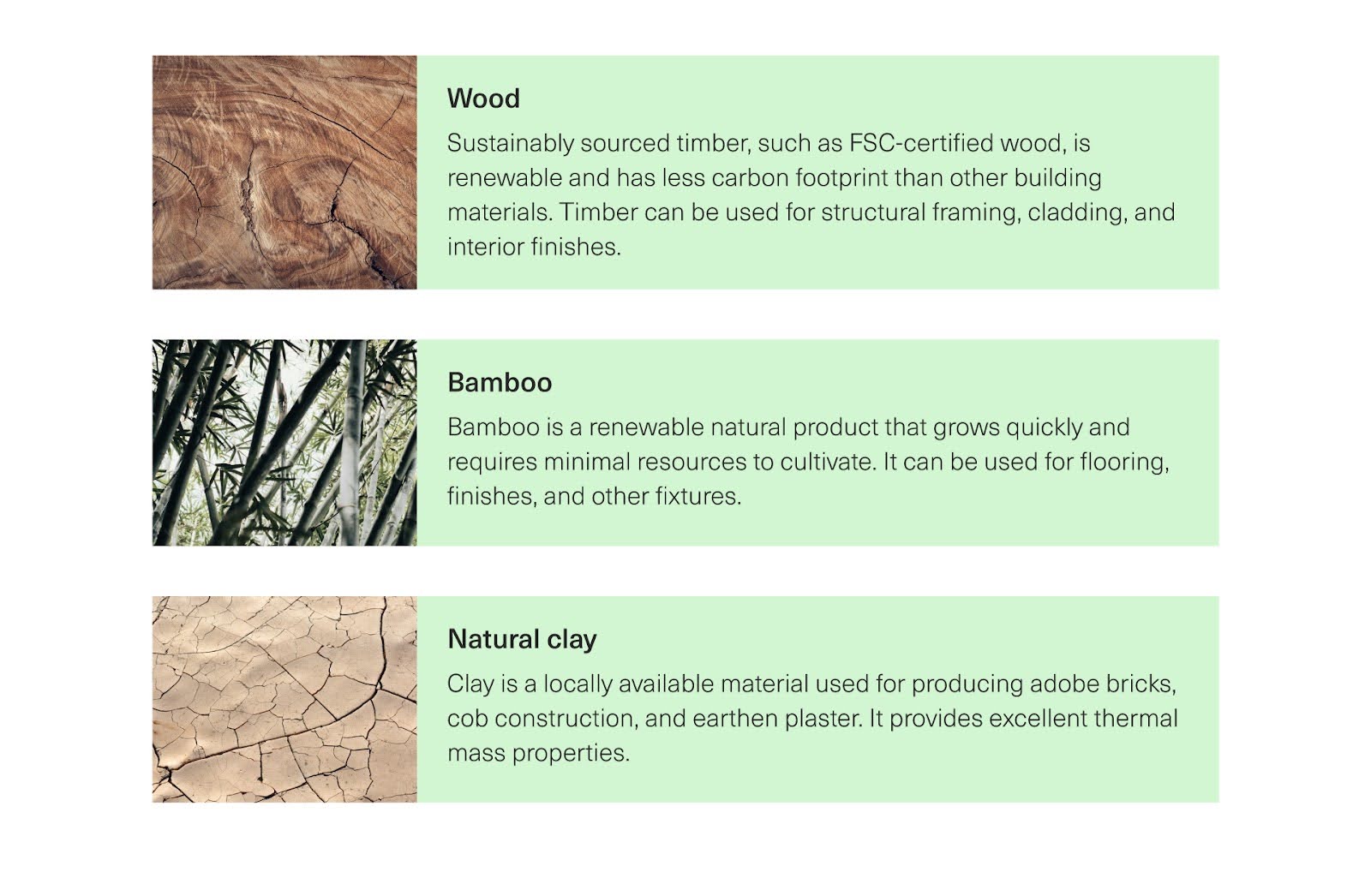
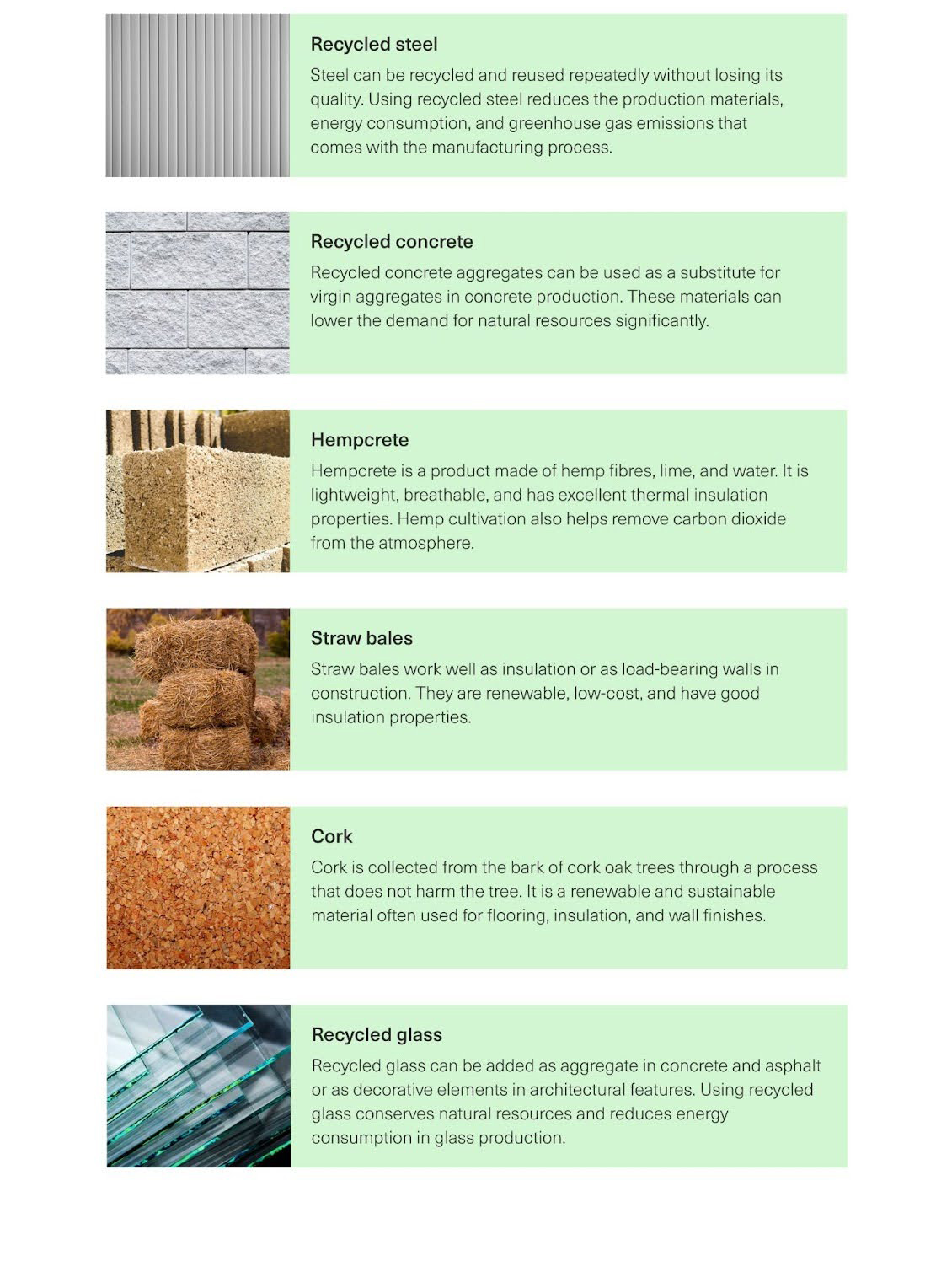
8. The Future of Sustainability Within the Construction Industry
Although the construction industry is helping communities be more sustainable and eco-friendly, it still has a long way to go. There are still many strategies that can be implemented to change the way buildings are designed and built to reduce environmental footprint while maximising their efficiency, functionality, and longevity.
Moreover, there are other construction and site supervision methods that can make buildings healthier, safer, and more efficient for the occupants.
The sustainable practices and concepts expected to shape the future of the construction industry include the following:
- Net-zero energy buildings
Advances in energy-efficient design, renewable energy technologies, such as solar panels, and energy storage solutions make this type of structure more feasible and cost-effective.
- Prefabrication and modular construction
Prefabrication and modular construction methods are becoming more popular due to their potential to reduce construction waste, minimise site disturbance, and improve construction efficiency. Off-site manufacturing allows for better quality control, faster project delivery, and reduced transportation-related emissions.
- Smart buildings and IoT technology
Integrating smart building technologies and IoT devices enables buildings to optimise energy usage, improve occupant comfort, and enhance operational efficiency. Smart sensors, building automation systems, and data analytics are crucial in achieving these objectives.
- Water conservation strategies
Water scarcity is paving the way for adapting water-efficient building practices, such as rainwater harvesting, greywater recycling, and high-efficiency plumbing fixtures. Implementing water-saving technologies helps reduce water consumption and the environmental impact of buildings.
“Estidama, essentially a LEED rating specifically developed for Abu Dhabi, covers more than the building itself and considers environmental, economic, social, and cultural factors. This recognition highlights our commitment to innovative, eco-friendly solutions that set new standards in the construction industry.”
Over the next year, several emerging trends are expected to gain prominence in the construction industry
- Resilient design and climate adaptation
With the growing impacts of climate change, there will be greater emphasis on designing buildings that can withstand extreme weather and adapt to the changing environmental conditions. This includes flood-resistant construction, heat mitigation strategies, and passive design principles.
- Zero-waste construction
Efforts to achieve zero-waste construction, where all materials are reused, recycled, or repurposed, will intensify. Contractors and developers will implement waste management plans, source materials locally, and prioritise deconstruction over demolition to minimise waste generation.
- Biophilic design
Biophilic design principles, which incorporate nature into the built environment to improve occupant well-being and connection to the natural world, will gain traction. This includes incorporating natural light, greenery, and materials into building designs.
9. Conclusion
The sustainable construction landscape is rapidly evolving, with the UAE and Saudi Arabia making significant strides through numerous LEED-certified projects. While global emissions from the construction industry remain a challenge, efforts by countries like Japan, Kazakhstan, and the USA to reduce their impact are commendable.
Sustainable building practices can revolutionise the construction industry and, at the same time, ease the impact of climate change. With a positive outlook and proactive approach, the future is green for this important sector of the community.
Sources
Manufacturing and construction emissions by country: https://ourworldindata.org/emissions-by-sector
To determine LEED projects, we analysed only the buildings and projects that were certified: https://www.usgbc.org/projects

